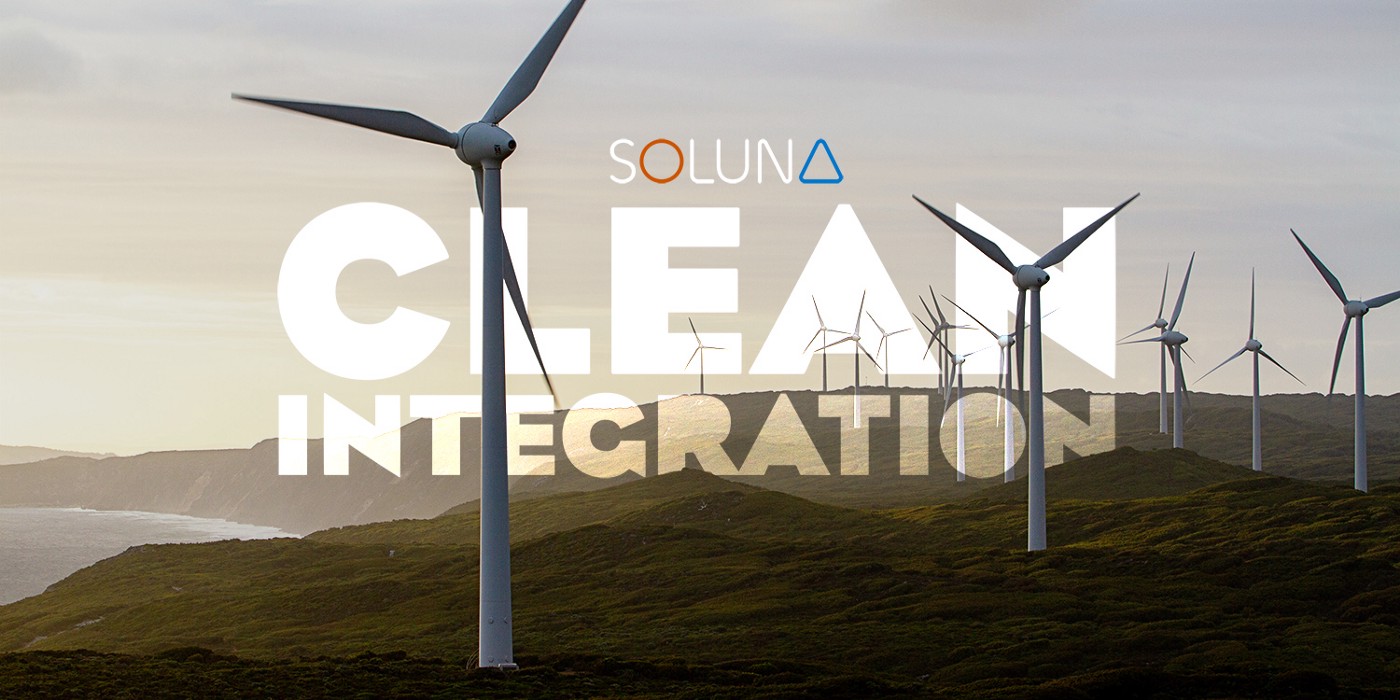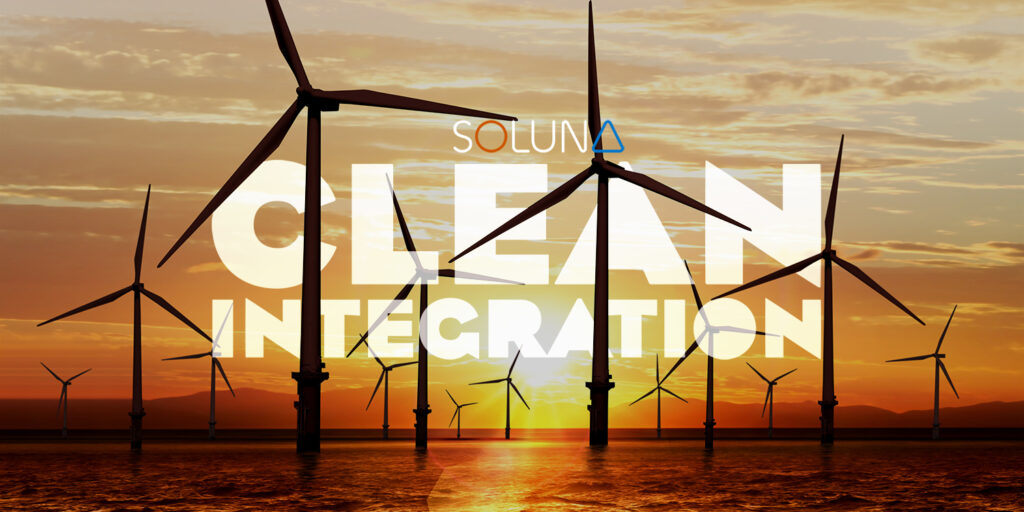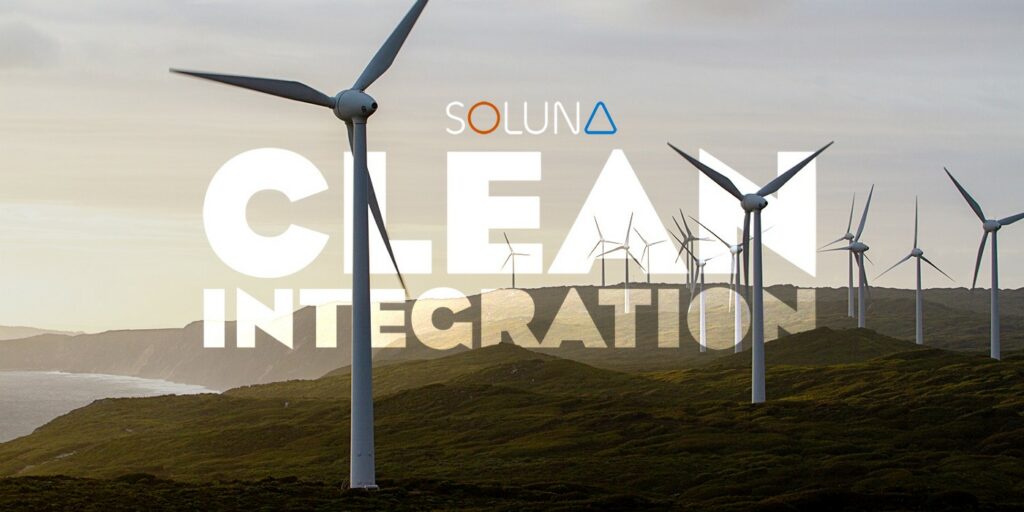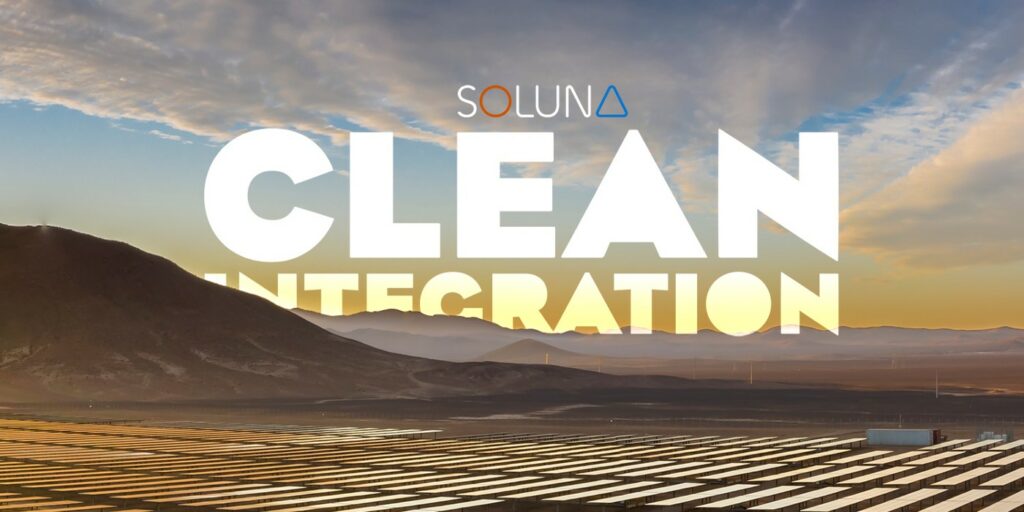Listen now on Apple | Spotify | SimpleCast
Bill Nussey and John Belizaire share a passion for solving the climate crisis and driving the clean energy revolution.
Their approaches differ — Bill has been dedicated to ramping up local-scale solutions like rooftop or community solar and microgrids, and John has been working with large utility-scale solar and wind projects. While they are working at different scales, the concepts they talk about have applications across the board.
Bill is the founder of the Freeing Energy Project, whose mission is to accelerate the global shift to cleaner, cheaper energy. Prior to Freeing Energy, Bill spent most of his career as a tech CEO. His first company, which he co-founded in high school, provided graphic software for early text-based personal computers. Since then, he has founded or served on the executive board of no less than five companies, which have created thousands of jobs and billions of dollars in value.
Bill’s journey into clean energy began with a TED Talk, which grew into 100+ articles and, most recently, a top ten energy podcast called The Freeing Energy Podcast. He is the author of Freeing Energy: How Innovators Are Using Local-scale Solar and Batteries to Disrupt the Global Energy Industry from the Outside In.
In this episode, Bill and John discuss renewable energy development in Africa, solutions for today’s energy grid, and his book Freeing Energy: How Innovators Are Using Local-Scale Solar and Batteries to Disrupt the Global Energy Industry from the Outside In, where he dives into the Five Orders of Clean-Tech Innovation.
(This transcript has been edited and condensed for print.)
[3:50] What do you see as the big challenges related to the grid, here in the U.S. and beyond?
Bill Nussey: I’ve been a tech CEO my whole life, and had some good fortune along the way. A company that I had run for a while called Silverpop was acquired by IBM and it became IBM’s marketing cloud. I wasn’t really sure what to do with myself inside of IBM, so I wrote a letter to the CEO, Ginni, and expounded on how IBM could really do so many more things with the assets and the history they had. And three months later, I was running strategy for her, for the company, and for the SVPs. That was crazy interesting, looking at a company with that much history. One of the projects that we were doing was to launch the IoT division and look at all the industries where digitization had been waning, and up bubbles the power industry.
I had gotten a double E degree a million years before. So I was fascinated, zooming in on the lack of digitization for the electric grid. It was just one of many industries, but one day I caught an article that changed everything about my life. I think it was a New York Times article. It said, “In the future, solar power is going to be cheaper than coal and natural gas. And that’s coming soon.” I said, “No way.” I started doing the research, I was tearing apart articles, and I actually found a scientist (who I ended up starting a company with later) to help explain to me the economics. And sure enough, solar was on track to become the cheapest way to generate electricity, or energy, in the history of humanity.
It has since reached that threshold and now continues to pull ahead of every other source of electricity, including wind. So that was a catalyst for me to say, “This is the biggest disruption in the history of business.” It’s bigger than the internet. It’s bigger than telecom and mobile phones, because it’s going into an existing $2, $3 trillion global industry, and it’s turning it upside down. And I love a good disruption. That’s been my whole career, being a part of various disruptions. I had to get into it. So I was driving my friends and my wife crazy, “Hey, I want to get into this space but I’m at IBM, I can’t really leave.” And a buddy of mine calls me up one night and says, “Hey, I know what you need to do. You need to quit IBM and write a book.” “A book?” “You can interview the smartest people in the world and ask them the dumbest questions.”
If he’d been a little more prescient he would’ve said, “Start a podcast,” but the book was the medium of trade. So, a couple of months later I resigned and started working on the book. My first interview was with Amory Lovins, who has always been a big hero of mine and sort of the godfather of small-scale energy. And I was off. I was supposed to take a year to write the book, but I was having too much fun, and learning too much, and the problems seemed to be even larger and more entwined than I could have imagined, as I kept pulling on the threads of discovery. Eventually, many years later than planned, the book came out late last year, and now I’m on a mission with the podcast, the articles, and the book to get people excited, aware, and educated — particularly innovators and entrepreneurs — that there is a really widely invisible but much faster path to a clean energy future than people get their heads around.
John Belizaire: Tell us three big challenges you think the grid has right now.
[7:17] What are the three big challenges the grid has right now?
Bill Nussey: The grid has been more broken than people realize. The week of the multi-day outage in Texas a year ago, the constant outages in California, the outages in Louisiana, despite New Orleans having built up a giant natural gas plant to prevent outages…I think the world is realizing that the grid is out of date and needs some major changes.
The other thing is that the grid is fundamentally inequitable. That woman in Kenya is a good example, but even in the United States, half the people don’t have a FICO score that allows them to put solar up, or even get access to community solar. Yet it’s a cheaper option for them if they could access it. They would actually save money. So there’s a broad opportunity to close the equity gap and make the lower cost, cleaner energy available to everybody. Those are a couple of the reasons I think the urgency is more than just climate change. Climate change is perhaps the biggest urgency, but there are other reasons to lean into a better grid. But it’s facing, as everybody who follows energy space knows, huge challenges to make the strides that it should be making.
What are you talking about when you talk about excess energy in your book?
Bill Nussey: When I wrote that section, I didn’t know you guys existed. And when our mutual friends connected us, I was reading all about you guys. It’s amazing that you have the vision and the support to build a business leaning into this because you’re arguably a little ahead of your time, but boy, oh boy is the market playing in your favor. People in the energy industry, in the electricity industry, are aware that the electricity in California gets upside down a couple of days a year and the price goes negative, so they say, and that forces them to sell the excess electricity into Arizona in that case. But that’s the tiny, tiny tip of the iceberg in terms of a trend towards excess electricity.
I have a quote in my book from Michael Liebreich, who’s one of the real visionaries in space. He said, “Overbuilding in excess electricity isn’t a bug, it’s a feature.” Most people see it as a problem, but not for the same reason the utilities do; the utilities see it as a problem because they have to curtail it. Very often they own the power plants and they have to turn them off because if you put too much electricity on the grid and there are not enough people to use it, it actually causes blackouts. It’s the opposite of the problem most people understand. So what do you do with this electricity? It’s not just the existing systems; today the percentage penetration of solar and wind is relatively small. That percentage is going to go to 20, 30, 50, 60, 70, 80, and eventually a hundred percent, but it’s going to be 50% before we know it.
That’s going to create that problem that happens in California to a much larger degree. That’s still just the first inning because as these 20-year financing agreements are paid off on solar panels and wind (in the case of solar panels with an average life of 32 years on utility-scale projects), you’re going to have at least a dozen years where all the electricity generated is marginally close to zero cost. So, that’s going to lower the average cost even further. Then, the people that are building the very large-scale systems are overbuilding so they can maximize the windows and the contracts they have to squeeze every dollar they can. We are about to enter a flood of excess electricity.
I knew that this wasn’t a bug; this was a feature. So I started looking and interviewing experts: what do you do with all this excess electricity? And most people say, “Hey, this is terrible. It’s a problem. What are we going to do?” There’s a whole book called Taming the Sun, which is a really good book, but he paints this problem entirely in negative terms, instead of in terms of an opportunity. It’s a really good book. You should read it. Incredibly thoughtful. The guy’s an expert.
Batteries are the obvious answer. People say, “Well, listen, we’ll just take the excess electricity and we’ll stick it into batteries and use it at night.” That’s a decent solution, but batteries are expensive. And it’s a singular solution. What I theorized in the book is that there are at least seven really big opportunities to use the electricity. Utilities and policymakers are saying, “Oh, this excess electricity is a problem.” When in human history has anyone ever said too much energy is a problem, right?
The first one that I think is a perfect match is carbon capture. Right now it’s difficult to make the economics of direct air and other carbon capture work, but as this abundance of excess electricity at a low cost becomes available, that’s going to drive it. Desalinization. Then one of the early ones, some of the stuff that Google has written about it, and you guys are doing this, which is incredible: data centers.
Like the electricity consumption or the bandwidth on the internet, the actual need for computation varies throughout the day. As people get on their phones in the morning and evenings, that actually causes more electricity to be consumed, but there’s a huge amount of data processing that can happen at any time. Google has a great white paper on how much money they saved in their data centers by simply shifting those, what you guys call batchable loads, to the timeframes when the cheapest renewable energy is available. It’s like a one plus one equals five combinations. But there are others: indoor agriculture benefits, and it tends to be when the sun is the brightest you need the most air conditioning, so it’s a good correlation. Creating fertilizer, very energy intensive. Of course, creating hydrogen and other synthetic fuels.
That’s maybe going to be the biggest of all in the long term. But then, even today, I was reading and thinking about my call with you today, Rocky Mountain Institute, or RMI now, just put out a paper about putting EV charging into office buildings rather than at homes and shifting the incentives for people to charge their cars in the office, because that’s when the solar is the brightest. That’s when we’re going to have excess electricity. So if you just incentivize as an office building or as an employer, and when your EV drivers are parked in the parking lot, make it really easy for them to use the electricity that’s being generated in excess on the grid, you actually correlate EV charging with the excess electricity.
This is listed as one of my five largest multi-billion dollar opportunities, this excess electricity, and I’ve presented this to McKinsey and several other esteemed big thinkers, and I always get the, “Wait, that’s really interesting” and “I haven’t heard about that.” So I think it’s a really great idea. I’m excited that you guys are already working on that business.

[17:07] When you look at new unicorn startups or technologies that you’ve seen come out recently, what are the ones that are the most inspiring to you out there?
Bill Nussey: I get really excited about companies that are using creative marketing and finance to basically democratize energy. Those are the ones that get me most excited on a personal level. That takes place in the U.S. The Department of Energy is doing an amazing job of helping create a dialogue around energy equity and renewable energy equity in the United States. I spend a lot of time with people in Africa looking at how we can accelerate the penetration of these smaller-scale systems and even the mid-scale systems. As an investor, the parts that excite me the most are what would be fourth-order businesses using that model, which is where you don’t necessarily need to own the assets, but you’re organizing how the assets are utilized and facilitating markets for them to monetize those assets.
The best example of a fourth-order market outside the energy space would be Apple’s App Store. Apple just has to put up a website and let you download some stuff, but they get 30%, somewhat controversially, for everything they sell. That’s incredibly profitable for them. Spotify, right? They’re creating a marketplace for people to sell what they want to sell, but they get essentially rents. In the energy space, you can look at V2G, vehicle to grid technologies, you can look at virtual power plants, and all kinds of aggregation. There’s a new ruling from the federal group that oversees the grid called FERC 2222, which is really paving the way, from a policy point of view to a large scale, to facilitate creative fourth-order businesses in my view. Those are the ones where I think you’re going to see the fastest growth, and the highest profits, and frankly, they will attract the most entrepreneurs. Some of the most talented people will gravitate towards these ideas where you’re not encumbered as much by the capital intensity that most early-stage renewable companies have to deal with.
Do you guys own the data center assets that you deploy for your customers?
John Belizaire: We are an asset owner. So what we do is we go to these other asset owners, folks who actually own the power generation facilities, that are experiencing this excess energy problem. I like to say I drive up with my little truck with the Soluna logo on the side and say, “Hey, I notice those turbines aren’t spinning very much over there.” You know, “What’s that about?” He says, “Well, the grid won’t let us put our energy over there.” And I said, “Well if you give me that acreage right there, I’ll build a facility that will virtually eliminate this problem for you.” And then we put a physical design, and a structure, and analyze their real-time data for the last four years in something we call the curtailment assessment. Then we design, build, and operate the facility. So we build a full-scale modular design, our buildings aren’t these big monolithic facilities that Google or Facebook would build. We actually build smaller modular units that still sit on concrete so they are actual buildings. Then we glue them together almost like Lego blocks. So we can build very large facilities using these modular designs.
Bill Nussey: Love that metaphor.
John Belizaire: And then we designed them so that they have a highly efficient conversion of electrons to computing. That means we’ve designed the cooling using an air-based design, so we move large volumes of air through the building to keep the temperature down to ambient level. We have a very flexible electrical design that allows us to build utility-scale facilities to address this wasted energy issue, and then convert it into a form that is globally transportable, that’s completely distributed so we can do everything from crypto mining to these other batchable processes. We own everything, from the electrical elements that connect to the power plant all the way to the actual machines that do the computing in the building. We basically offer that as a resource, both to ourselves in the crypto mining space, and eventually to enterprises in the batchable computing space.
Bill Nussey: You would absolutely be a third-order system, unequivocally, because you are selling assets that you own as a service.
That is one of the clearer fits in the five order model. The fourth-order you inevitably will do as your market grows. Someone’s going to look at a whole raft of companies all competing in a similar space that you’re in because it’s an exciting space and they’re going to traffic cop it. That would become a fourth-order business.
John Belizaire: Sort of sitting on top and allowing folks to shop for the best price or best computing availability across these green data centers?
Bill Nussey: Yes.
John Belizaire: Fascinating.
Bill Nussey: And you guys are co-locating with the facility, with the solar and wind farm, correct?
John Belizaire: Yeah. We’re behind the meter. Yes.
Bill Nussey: Excellent. Excellent. Because I’ve been in software for 30 years, I have to ask you a software nerd question. Are you guys using GPUs or using low-power ARM chips? What kind of computation engines do you put in your containers?
John Belizaire: Good question. For crypto, we’re using ASIC-based machines, so a single purpose. Then in our phase two business, the buildings will be filled with GPUs.
Bill Nussey: GPUs. Okay.
John Belizaire: We build a software layer on top of that to manage and facilitate the building. Then another software layer on top of that to manage and schedule the jobs that people will have us run for them across our fleet of facilities around the world.
Bill Nussey: I was nerding out this morning, watching a video on Apple’s new M1 Ultra chip. It has unprecedented computing efficiency per watt. It’s too bad you can’t buy it, they won’t sell you any, I don’t think, but boy, talk about squeezing every bit of computation from a kilowatt.
John Belizaire: You’re right. It actually popped up on our company Slack today and fired up all sorts of imaginative conversation around it. It’s like “I wish we could build custom-built machines around these things.”
Bill Nussey: But that’s what I love about your business, John; these trends are all playing to your favor. You’re out there basically realizing that there’s a hot area where people are going to want to build apartment buildings, but no one realizes, so you buy the acreage, then you wait for everyone to realize that’s a hot region in a city. Then you sell the acreage to people who are going to build apartment buildings and retail. So you’re basically out there building relationships with people before everyone knows that this is an exciting market. Once you have that container there, those containers, you can put any computation engines in there that you want as long as it fits with the market needs. If it turns out it’s 10 times cheaper in three or four years, well, you can replace it and you just make more money.
John Belizaire: That’s right. Man, I’m going to take this snippet and I’m going to send it to our investors. What I’ve been saying is that we are essentially building a flexible platform that’s integrated with green electrons that helps to shift to where computing is headed. Computing is an ever-evolving space, and the computer fabric that you use is ever-evolving. We’ve built a flexible platform that allows us to participate in that evolution over time. In fact, we’re consciously planning to evolve the company over time.




